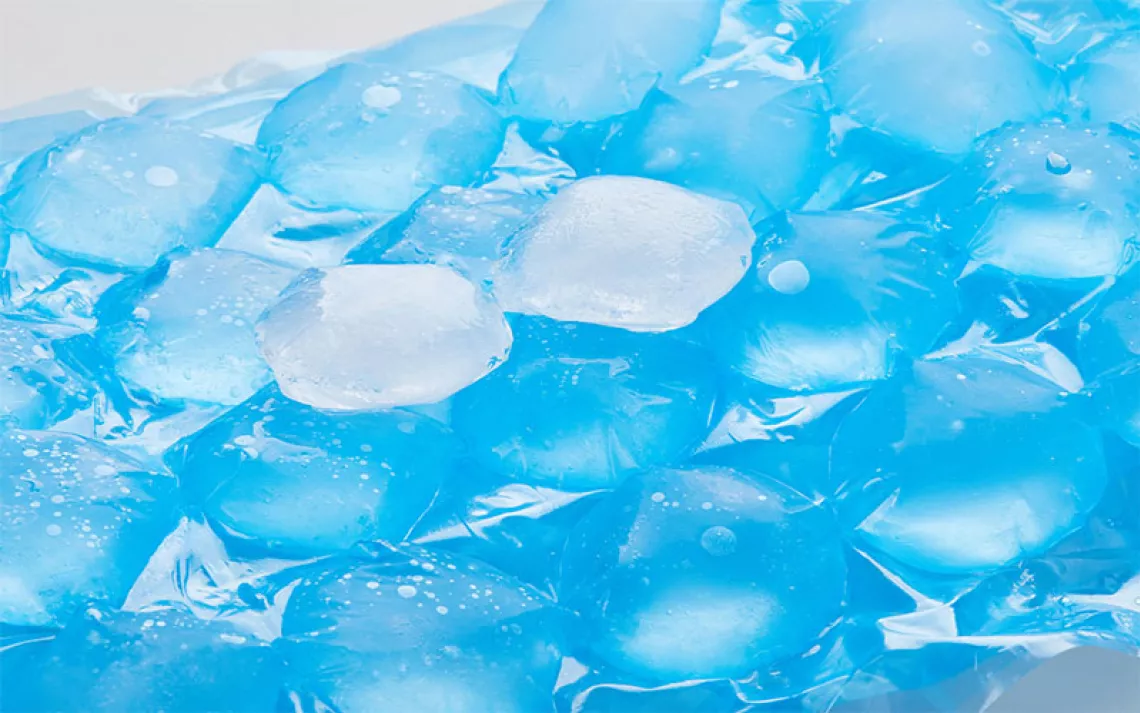How to Feed Your Furry Best Friend Sustainably
It’s a complicated yet feasible endeavor

According to a UCLA study from 2017, feeding the cats and dogs of North America emits up to 64 million tons of greenhouse gases each year. And the matter of ecologically responsible pet stewardship gets super thorny when it comes to food—variables, after all, include ingredients, manufacturing, packaging, transportation, and more.
As dedicated dog lovers, we did a deep dive to better understand how to give our best snuggling and hiking buddies the nutrition they need with the lowest impact on the planet. We considered the raw materials that go into dog food, its manufacturing and packaging, the transportation of that food to the store or your home, and finally, the disposal of its packaging.
Raw materials/sourcing
Dog food ingredients include meat and plant protein, fruits and vegetables, grains (such as corn and wheat), and added vitamins and minerals. The Association of American Feed Control Officials (AAFCO), a nongovernmental organization with no enforcement arm, sets the guidelines for the minimum and maximum nutrient concentration in the kibble and cooked food. Per those guidelines, dry food for adult dogs must consist of at least 18 percent protein. But AAFCO doesn’t have rules on what constitutes those concentrations, or where the ingredients are sourced. Quite often, that protein comes from factory-farmed animals.
Some such protein content comes from rendered ingredients—i.e., slaughterhouse or fish industry waste in the form of meat and bone meal, meat derivatives, poultry byproduct meal, or fish meal that’s considered unfit for human consumption. As a zero-waste concept, this may seem promising, but according to Long Beach, California–based pet nutritionist Wendy Childers, some of these ingredients and their quantities may not provide pets with adequate nutrition. Relying on byproducts also doesn’t address the issue of the welfare of the animals used in the production of dog food.
Childers, who grew up on a Wisconsin farm, notes that her family would take animals who died on the farm, as well as local roadkill, to the nearby rendering plant where carcasses were cooked down to separate the fat and other components, which would then be sold to pet food companies.
However, it’s not all so transparent. “To AAFCO, the sourcing doesn’t matter,” Childers says. “Poor-quality ingredients and good-quality ingredients all follow the same guidelines.” She adds that the ingredients in commercially available dog foods come from all over the world, and in addition to AAFCO are subject to state guidelines with specific rules determining which ingredients can go into pet foods manufactured in that state. California, for example, considers bone content as a denaturant in raw dog food (a denaturant is part of the rendering process that determines what products are feed-grade but not fit for human consumption), but Childers says Wisconsin “doesn’t allow bone content. They want ash.” Too much ash in a dog’s food can cause gastrointestinal issues.
One company, Open Farm, features a code on its kibble and wet food products that gives pet owners the ability to trace the sourcing of each ingredient. However, the vast majority of dog food brands will require consumers to perform their own due diligence. Pet nutritionist Wendy Childers, CNP, says the sweet spot for nutrition for many dogs is right in the middle of these requirements.
The raw materials themselves, according to the Pet Food Institute, arrive at pet food facilities in a number of ways: in silos shipped via railcar or in bags or oils shipped in tanker trucks or drums—all of which create carbon emissions and increase the environmental pawprint of the final product. The greenest choice is going to be the most local brand you can find.
Manufacturing and packaging
The Global Alliance of Pet Food Associations’ website explains that typical wet foods are made by mixing ingredients together and then cooking them in a can, tray, or pouch so that it remains sterile and shelf-stable. Dry pet foods are made by mixing dry and wet ingredients together to form a dough, which is then “heated under pressure” and “pushed through a die machine that cuts the kibbles,” which are then “dried, cooled, and spray coated.” (The coating is to enhance taste and includes preservatives to lengthen the shelf life, which is years.) All of these steps use energy, which is why a few of the “greener” pet food companies, such as the Pound Bakery and Pet Dine have gone solar-powered.
As for dog food packaging, those materials are varied and sourced worldwide. Most often, packaging involves metal cans, multilayered or coated paper bags, foil pouches, plastic resealable bags, individual-serving-size tubs, and, for varieties of food that contain higher liquid contents, stand-up pouches. Only some of these packaging materials are recyclable. Ask your local pet store about brands that participate in recycling programs, such as Tetra Pak. According to Food Engineering Magazine, 75 percent of pet owners would prefer more sustainable packaging. In spite of that fact, green packaging hasn’t been a cost-effective, nor a functional, solution for most pet food companies. One raw dog food company that relies on plastic noted that paper options aren’t strong enough to support its frozen donut-shaped wares and that a number of the more ecological packaging labels couldn’t survive the freezer without the text fading and becoming illegible.
Packaging matters to consumers and thus to brands’ bottom lines. Because as Childers says, “We buy with our eyes.”
Transportation
The United States produces just under 10 million metric tons of dog food each year, and it is shipped by truck and rail all over the country to stores as well as to online companies like Chewy that resell it or in some cases deliver it directly to consumers’ homes. This, of course, thickens the carbon pawprint plot.
To counter this, some companies, such as Neo Bites, McAdams, and Beco, have sought certification by a number of organizations to be declared carbon neutral, or even carbon negative. Companies do this by determining how many emissions they generate in all aspects of their business and then by decreasing the amount and funding carbon-reducing projects like reforestation and wind energy around the world.
Disposal of packaging
While paper bags and cans from dog food may be recycled in many areas of the country, plastic containers typically end up as waste. Which is why some companies, like IandLoveandYou and Open Farm, have partnered with TerraCycle and offer free shipping labels to return bags, pouches, cups, and other packaging. TerraCycle helps eliminate waste by finding innovative ways to recycle and reuse or repurpose items.
Others have tried to find different solutions. One pioneering dog food company, TC Raw Eats, which caters to only local clientele in Southern California, has received the California Department of Public Health’s permission to start selling its food in bulk so people can bring their own reusable containers to participating pet stores. These are great steps forward when it comes to disposal and recycling of packaging, but still, Plastics Today, the professional organization and magazine for plastics professionals, estimates that the pet food industry produces 300 million pounds of plastic waste yearly in the US.
Some dog food companies, such as Jiminy’s, have begun using insects including crickets as the main source of protein in dog food toppers—additional nutrition you can add to kibble or wet dog food—and treats. (Cricket farming produces minimal greenhouse gases.) Others have looked to outside sources for counsel and accreditation, such as the Pet Sustainability Coalition (PSC), a nonprofit that has offered brands support, education, environmental and social impact assessment tools, nutrition and animal welfare guidance, and accreditation since 2013.
Caitlyn Dudas, cofounder and executive director of PSC, said that for a company to become accredited, “they must complete an assessment aligned with the UN Sustainable Development Goals, meet a minimum performance standard, and undergo a third-party verification of their assessment.” She adds, “PSC accreditation helps consumers and retailers identify companies that are using globally recognized measures to evaluate their sustainability efforts and commit to ongoing progress.” Some members of PSC include Only Natural Pet, Kong, Wellness Pet Company, and Earth Animal; almost 200 pet companies are going through or have been through accreditation.
When it comes to sustainability, Dudas recommends that pet parents look for “transparency on a brand’s website and packaging with clear information about ingredient sourcing and any third-party certifications—like Certified Organic, Certified Humane, Carbon Neutral, and B Corp certification.” These, Dudas says, provide the surest clues as to whether a given company is concerned about source protein welfare and sustainability.
 The Magazine of The Sierra Club
The Magazine of The Sierra Club



